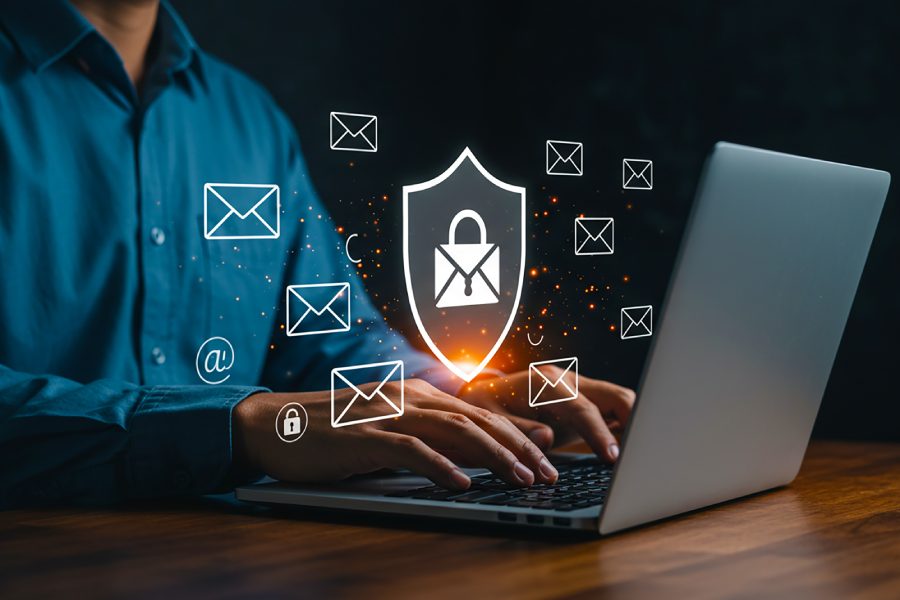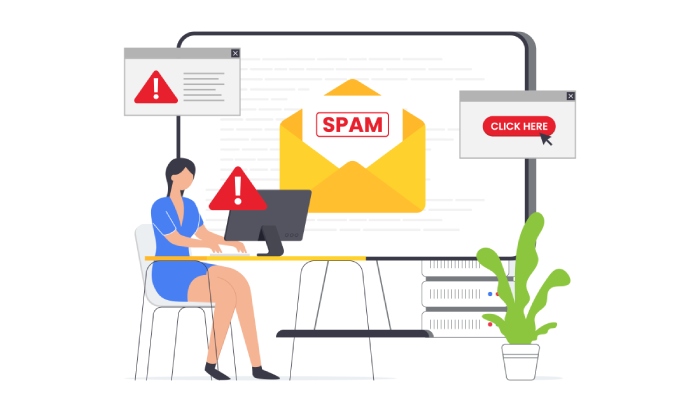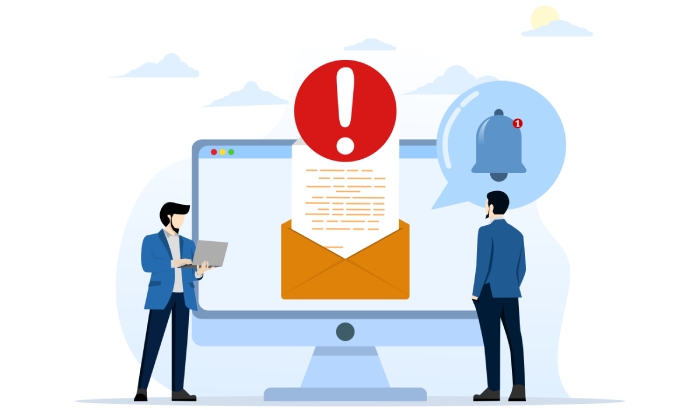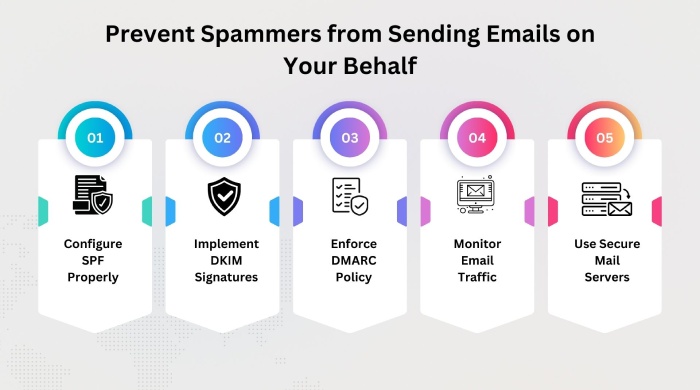How do you ensure smooth DMARC implementation?
There are plenty of communication channels out there, but the one that has stayed and created the most significant impact on businesses is email. You might agree with us when we say that email is indispensable when it comes to connecting your brand to your clients.
Since it isn’t like any other communication channel, the way to protect it shouldn’t be like any other, either. You need a strong security strategy that not only assures your recipients that the emails they receive from you are legitimate but also safeguards your domain from phishing and spoofing attacks. DMARC, that is, Domain-based Message Authentication, Reporting & Conformance, checks all these boxes and more!
DMARC is an authentication protocol that prevents cybercriminals from impersonating your brand, safeguarding both your business and your clients against phishing scams and email spoofing. Since this authentication protocol plays such an integral role in determining your business’s reputation and security, you need to implement it very carefully. It is easy to think that you can enforce DMARC by yourself, but it’s far more complex than it seems.
Why do you even need DMARC?
So far, we have established that you need DMARC to authenticate your outgoing emails and prevent spoofing attacks, but there’s more to it.
When your emails fail to reach their destination, both you and your recipient are on the losing. In such a case, your client might miss out on important information, and your business could lose valuable opportunities. Missed invoices, unreceived confirmations, or overlooked marketing messages can directly impact customer trust and revenue. Now add to this the financial stress of recovering from a cyberattack if it ever strikes your organization!
This is where DMARC comes in! It ensures that only authorized senders can send emails using your domain. Without it, spammers can send spoofed emails that appear to be from your company, compromising your clients’ security and your reputation. DMARC prevents these attempts and offers reports that indicate who is attempting to abuse your domain, allowing you to have more control over your email security. DMARC blocks these attempts and sends comprehensive reports on who is trying to misuse your domain, giving you more control over your email security.
What are the challenges of DMARC implementation?
You might have heard security experts say that you shouldn’t be implementing DMARC yourself. The reason for this is that configuring DMARC can be tricky, particularly when configuring SPF and DKIM records. If these records aren’t properly configured, even legitimate emails can fail authentication, which might lead to deliverability issues.
Another issue with DMARC is that email providers continue to tighten their filters in order to combat sophisticated cyber attacks. Although this makes email more secure, it also sometimes marks legitimate emails as spam, especially if the authentication settings are not configured perfectly.
The thing is that without proper tools to analyze DMARC reports, organizations are left in the dark as to why their emails are not being delivered. In such cases, you might never know if it’s a misconfiguration, an absent record, or an alignment problem. This can become really annoying, especially if your business-critical communication is dependent on email. To avoid such problems, you need the right skills and tools that can monitor and make adjustments when necessary.
How can DMARC management tools simplify implementation?
Configuring DMARC can be a little complicated if you don’t understand email authentication. There are a lot of moving parts, and if they’re not set up right, even your valid emails might get caught in spam. This is where DMARC management tools come in handy—they make everything easy so you don’t need to worry about the technicalities.
These tools ensure your emails meet authentication standards so they don’t end up in spam. They also give you easy-to-read reports that show if emails are failing authentication or if someone is trying to send spam emails on behalf of your domain. This way, you can fix those problems immediately and safeguard your brand against phishing and spoofing attacks.
Moreover, if you have more than one domain, keeping them all managed manually can be a pain. DMARC tools consolidate everything into one easy-to-use dashboard so you can have all your email systems secure in one spot. They also assist with BIMI (Brand Indicators for Message Identification) so your business’s logo can appear in email inboxes, making your emails appear more professional and reliable.
In short, DMARC management tools make email authentication a breeze! They assist you in safeguarding your brand, getting emails to the right recipients, and making authentication management so much easier than it would be to do manually.
DMARC reports are the secret weapon in the war against cyber threats if you leverage them the right way! Need help with DMARC management or reporting? Get in touch with us today!



